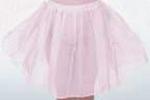| . |
 Everest Nepal Cultural Group, Himalayan
International Cultural Association, are just a few of the dance
companies, dance schools, dancing organizations and dance wear suppliers
that that can be found in our comprehensive Directory of Nepalese
Dance
Companies. Everest Nepal Cultural Group, Himalayan
International Cultural Association, are just a few of the dance
companies, dance schools, dancing organizations and dance wear suppliers
that that can be found in our comprehensive Directory of Nepalese
Dance
Companies.
Traditional Nepalese Folk Dances
TAMANG SELO: Tamang community performs
this dance in the hilly areas. They are like Sherpas and are quite brave. By
tradition they are also good fighters and hard worker specially was popular
as woodcutter. This dance is performed in accompaniment of the playing of a
hand drum named Damphu with a team of boys and girls.
SHYABRU: In the language of the Sherpa people who live in the high
Himalayan slopes of northern Nepal, 'Shyabru' means feet and 'ru' means
movement on rhythm, so the dance Shyabru menas 'rhythmic feet'. The Sherpas
are brave, intrepid people, known world over as superb mountaineers. They
live and face unimaginable hardship with courage and a smile.
DHIME: Jyapu community from the Newar community of Kathmandu and
Jyapu are famous as well as hard worker for agriculture product. During the
festival time either special function of them, Jyapu peoples are dancing
with the music of Dhimey also this Jyapu communities are popular as well as
dancer of Nepal. So Dhimey dance is typical dance belong to Jyapu community
of Kathmandu valley, which is performed during the festival, and after they
reap the good harvest.
SORATHI: The meaning of Sorathee is the number of sixteen beautiful
queens. Long time ago, it was small – small stare it is in the Himalayas.
One of King "JYAISHANGE" from east country and once of queen "Himaiti" from
west: among from the one state were took sixteen another queens for dancing
and enjoying including the Hyamaiti queen. This dance is mostly performed in
a large group. This is a very popular folk dance of Gurung as well as Magar
community of Nepal.
BHOJPURI: Nepal is a very small country although her is much
different diversity living in same community original from the District of
southern part of Bhopure (Yarai) situated in the far eastern development
region of Nepal called BHOJPURI have their own culture, language and
tradition. This dance is very popular on southernmost part of Nepal. It is
similar with the Indian culture of northern part.
CHUTKA: Gurung and Magars are very popular for brave and fighters as
well as Gorkaha's Soldiers worldwide. These peoples are entirely interested
for internment frequently in there community. During there internment they
do dance and singing also this dance is performed during the different
festive occasion in the western pars of Nepal where boys and girls and dance
in pairs.
JHANKRI (Witch Doctor): Jhankri means the doctor pf witch. During the
bygone days when there were no medical facilities in the county, the sick
people used to be taken to the Witch Doctor to get cured. Even nowadays in
the remote village of Nepal this practice is still prevailing. One can see
in this dace how witch doctor cures a patient.
DHIMAL: The Fisherman community (called in Nepalese word "MAJHI") is
popular as well as a name of DHIMAL live in Terai Part of Eastern Nepal.
There profession is fishing always. Specially in a rainy day, before going
to fishing, these people would like to enjoy with a drink and dace also
singing because of there happens although Dhimal communities celebration
there special Festival "PARBA" during the month of April, in this festival
they Do DHIMAL DANCE.
TAPPA: This dance is popular among the Gurung community in the Rapti
zone in Nepal, especially in the Dang district. The daces starts in a slow
key and the tempo gets faster and faster towards the end. It is based in the
rhythm or beating of the hand drum, popularly known as pappa, and hence the
name of the dace is Tappa.
JHIJHIYA: Maithila, once ruled by the illustrious philosopher King
Janak during the prehistoric period, a rich heritage of folk daces is what
is known as a 'Jhijhiya Naach' It is the dance participated by a group of
young women. It is performed during the great festival of Bijaya Dasami. On
their head the performing women carry lanterns (pots made by clay) with
several holes and diyos (candles lit with mustard oil) inside, thus allowing
light to come out through the holes. On the lantern is a dhakan (a cover
made of clay) with fire burning and dried dung cakes. Women purposely dance
slowly with lanterns on their heads so that the holes can be counted. This
dance said to be influenced by the Tantrik cult and performed mainly to
protect people from evil spirits.
KHYALI: The khyali dance has district folk flacon. Its mood is one of
fun & gaiety as the world 'Khyali' suggest. In this dace the young people
indulge happy banter and romance. It is not unusual for a young man to win
his bridge at such song and dance contest he can take girl as his wife.
DEHATI: This is a very popular dace of Maithali people living in the
hot flat land of the southern part of Nepal. Dehats literally means the
'village of Plains', which are popularly known as the 'tarai'. This dance is
especially noted for the movements of the body and facial expressions. It is
the romantic dace of spring and autumn festival when the young people
attempt to attract each other.
JHYAURE: Based on love theme, it is very popular amongst the young
boys and girls in the western hilly part of Nepal. Jhyaure songs and dances
are the media of entertainment in the hilly regions of Nepal. This dance is
very free and not restricted to any time but even during the rice-plating
season it may be seen. The girls will sing the Jhyaure song and boys reply
in the same manner. It is very joyful song and is a ritualized love theme.
JHUMRA: The Jhumra is based on a Sanskrit text, the Geet Govinda. The
dance is peculiar to the Tharu community, a tribe living in al hot, plain
belt of Nepal in the southeast and southwest of the kingdom. This dace is
performed on special festival occasion like Bada Dashain, which is the most
important of all Nepalese festivals. This dance has several local variations
such as, the Jhumri, Jhumra, Dhumar and Dhumra.
KOWRAA: This dance is performed by the Magars, a community which
inhabit the mid-hills of Nepal. The dance is woven around the ever-perennial
theme of love. It is performed in a spirit of gay
abandonment, harmony and joy.
JHANGAR: This dance is very popular in the Terai region of Nepal.
This dance is preformed in a large group of Jhangar communities. Especially
I a day of full moon of August, these peoples are singing and dancing for
the celebration of completed the work in the filed organize in full moon
day.
CHANCHAR: People from the Tharu community are living in the Terai of
western part of Nepal. These people are mostly living out of civilize with
there own tradition. So this dance is popular in Tharu community, they
performing Chanchar dance devoted of Lord God Krishna.
CHYABRUNG: Rai, Limbu also very popular for brave and fighters as
well as Gorkha's Soldiers worldwide and these peoples living in the Northern
part of Eastern Nepal. Young boys and girls during the different festive of
occasion of Rai, Limbu, mostly they perform Chyambrung dance, which is
popular.
RATAULI ( RODI): This dance is performed in a Rodighar. It is a short
of club house, where young boys and girls of Gurung community gather in the
evening and have fun with their dances and singing. If they fall in love
between girls and boys each other, they get married too. This was very
popular of mid-western Nepal. Gradually this is eradicated at present.
TYAKULI: This dance is performed in the marriage ceremony. In this
dance you will see how the young boys and girls enjoy during the marriage
ceremony with music of tyamko (like a drum) in the remote region of Nepal.
KHUKURI DANCE: Khukuri is the famous weapon, which the Gorkhali (Gorkha
Soldiers) have become very famous in every battle field. In this dance the
dancer shows the skills of using the Khukuri (Gorkha Knife) which is used in
killing the enemies. Gorkha Soldiers are great popular for winnings Victoria
Cross medal in II world war by the using of Khukuri.
ARATI DANCE: The meaning of Arati is a kind of special presented
praying which shown by oil lamp before start the program that called " Arati"
in Hinduism. Once upon a time in the golden age, this dance is dedicated to
"Nataraj". According to the Hindu's Philosophy (Shiva Puran), the meaning of
Nataraj is period of dancing by Lord God "SHIVA". Therefore in Hindu's
Culture people want to present first Arati with the dance of Natraj before
start the program. In this dace light will be put off and dancer will come
with candle light in their hand.
YAK DANCE: Yak is a popular mountain carrier in the mountainous
regions of Nepal. In this dance, a Yak boy and Yak is shown. Yak is a very
lovable animal; people drink its milk, get lots of cheese and also make use
of transportation of goods . This is the only animal, which can carry loads
in high altitudes.
YETI DANCE: Yeti means Snow man. According to the analyses history of
snowman, nobody can see the particular snowman although specialist finds
some of yeti's foot signals in the Himalayas and as the signal of Yeti's
foots, we believe our expectations snowman, which we will appear front of
you.
Himalayan
International Cultural Association
| Featured
Nepalese
Dance Company |
Himalayan International Cultural Association
A non- government organization and non-profit making
organization been formed by a team of music enthusiasts to
develop the local cultural heritage of Nepal since 2000.
The target of the association is to establish more chapters in
major cities of Nepal to promote and preserve Nepalese cultures
of various ethnic groups.
At present, there are 84 members from 4 cultural groups and
expected to have gradual increment. We are interested to
participate in the International Folklore Festivals to have an
cultural exchanges between every nations. At the same time, we
are organizing an International Folk dance festival during April
10 - 17, 2006.
If you would like your Nepal Dance Company, Dance Organization, Dance School featured here
then please email
bangkokcompanies@gmail.com
|
There are many fine dance schools in
Nepal. I know I am in contact with them as we
supply a range of high quality dancewear products like leotards, dance
pants, dance dresses and other dancing apparel.
Bangkok Companies supplies an amazing range
of dancewear from Thailand. I have looked at these dance garments and dance
accessories in detail. There is only one word to describe them Superb.
For more details click on the pictures or send an email to
bangkokcompanies@gmail.com We
regret at this time we can only satisfy Nepal wholesale dancewear requests.
"Dancewear designed by
dancers for dancers"
| Dance
Dresses |
Kids Leotards |
Adult
Leotards |
Dance Bras |
|
 |
 |
 |
 |
|
| |
Dance Pants |
Tutu's |
Dance
Shorts |
|
 |
 |
 |
 |
|
| Dancewear |
Dancewear Organizers |
Dance Bags |
Dance
Backpacks |
|
 |
 |
 |
 |
|
Bangkok Companies is a full service
product sourcing company in Thailand. For All your
dancewear needs please email
bangkokcompanies@gmail.com with your requests.
Dance Schools in Nepal, Dancewear Suppliers, Dancing Organizations
Everest Nepal Cultural Group
G. P. O. Box 11732 NP-Lazimpat, Kathmandu Nepal
(977)142.19.99;Fax(977)144.13.04
www.folkfestivals.org ;
www.encg.folkfest.org
EVEREST CULTURAL CENTER, under the Authorized Registration Act of His
Majesty's Government of Nepal, feels that an International Folk Festival
would help to expose Nepal more to the outer world.
--------------------------------------------------------------------------------
Himalayan International Cultural Association
GPO Box 7109, Narayangopal Road, Maharajgunj, KMC#3
Kathmandu, NEPAL
Tel: +977 1 2150059, +977 1 4720244
Fax: +977 14720244
Mobile: +977 9851021314
Email:
himalayan.international@gmail.com
Website:
www.trekkinginternational.com/hica
--------------------------------------------------------------------------------
Ram Chandra Koirala
G. P. O. Box 13676 NP-Lazimpat, Kathmandu Nepal
Tel. (977)144.219.99;(977)144.413.04;
www.encg.folkfestivals.org
Program and Presentation in own country and abroad, several times. Direction
and provide Training and Conserve of Nepalese Folk Dance, Sing, Traditional
Music Instrument etc. We perform any where.
--------------------------------------------------------------------------------
Jayanti Koirala
G. P. O. Box 13676 NP-NP-Lazimpat, Kathmandu Nepal
Folk Dance Choreographer
--------------------------------------------------------------------------------
Nirmal Shrestha
679 Budhhanilkantha Road, Pink House, Bansbari NP-4431 Kathmandu Nepal
977)121.500.59;(977)147.202.44;Fax(977)147.202.44;
Mobile(977)985.102.1314/98510 65307
www.trekkinginternational.com/hica
President Shahrazad-Catharina Huisman
--------------------------------------------------------------------------------
Anil Adhikari
G.P.O.Box : 7725 NP-Kathmandu, Nepal Nepal
977-01-4431567; 4431550
www.geocities.com/tekasamuha
-------------------------------------------------------------------------------
Sujan Singh Dangol
Box 3409 B.G. Plaza, Lazimpat (Nursery Lane) NP-Kathmandu Nepal
Tel. (977)141.5280, Fax (977)142.8778
Ensemble, traditional classical dance and folk dance of Nepal
--------------------------------------------------------------------------------
Gobinda Singh Dangol
Box 3409 B.G. Plaza, Lazimpat (Nursery Lane) NP-Kathmandu Nepal
Tel. (977)141.5280, Fax (977)142.8778
www.nepalfestivals.org
Organizer, traditional classical dance and folk dance of Nepal
--------------------------------------------------------------------------------
Santosh Sharma
Post Box No. 20182 Np-kathmandu Nepal
Tel: 9771-4228309/2003670 Fax: 9771-4229425
www.musicnepal.com
Non-profit organization dedicated to the promotion of formal education in
dance and music.
--------------------------------------------------------------------------------
Kaiser Mahal
Kantipath NP-Kathmandu Nepal
Tel. (977)418.782; Fax (977)1.412.460
Organization
--------------------------------------------------------------------------------
Cultural Corporation (Sanskritik Sansthan)
Rastriya Nachghar, Jamal NP-Kathmandu Nepal
School
--------------------------------------------------------------------------------
Cultural Preservation Council (Sanskritik Sambardhan Parishad)
Anamnagar, Post Box 1115 NP-Kathmandu Nepal
School
--------------------------------------------------------------------------------
Music and Dance School (Sadhana Kala Kendra)
NP-Kathmandu Nepal
School
--------------------------------------------------------------------------------
Nepal National Commission for UNESCO
Ministry of Education; Keshar Mahal, Kantipath NP- Kathmandu Nepal
Tel. (977)418.782; Fax (977)1.412.460
National organization
--------------------------------------------------------------------------------
Royal Nepal Academy (Nepal Rajakiya Pragya Pratisthan)
Kamaladi NP-Kathmandu Nepal
School
--------------------------------------------------------------------------------
Shaphalya Amatya
Singha Durbas NP-Kathmandu Nepal
Association
--------------------------------------------------------------------------------
Badri Khanal
G.P.O. Box 7736 NP-Kathmandu Nepal
Tel. 977/1/221 391; Fax 977/1/434407 & 225 898
Institute
--------------------------------------------------------------------------------
Manik Lama
P.O. Box 2919 NP-34 Kathmandu Nepal
Folk festival organizer
--------------------------------------------------------------------------------
Sunil Pokharel
G.P.O. Box 7736 NP-Kathmandu Nepal
Tel. 977/1/221 391; Fax 977/1/434407 & 225 898
Institute
--------------------------------------------------------------------------------
Nirmal Sherestha
House#2719, , Narayangopal Road, Maharajgunj NP-7109 Kathmandu GPO Nepal
Tel. +97714720244, FAX +97714720244
www.trekkinginternational.com/hica
himalayan.international@gmail.com
President, Our organization consists of different activies like Typical
local Nepalese dances of various tribles and communities, Composers,
Musicians and dancers.
--------------------------------------------------------------------------------
Manish Shrestha
G.P.O. Box 7736 NP-Kathmandu Nepal
Tel. 977/1/221 391; Fax 977/1/434407 & 225 898
Institute
--------------------------------------------------------------------------------
Abhi Subedi
GPO Box 7736 NP-Kathmandu Nepal
Tel. 977 1 221391; Fax 977 1 434407, 225898
Organisation
--------------------------------------------------------------------------------
Traditional & Mask Dances of Nepal: -
Himalayan
International Cultural Association
MANJUSHREE:
Manjushree is the oldest bodhi of the Bodhisattvas and his worship confers
on the devotee wisdom, retentive memory, intelligence and eloquence. He is
the patron of those who preach the Dharma. in Nepal. According to the
Buddhist legends it is Manjushree who came from Mahachina, worshipped the
self existence flame at the age of the lake which covered the valley, and
then drained the valley by cutting through the ridge at its rim with his
flaming sword thus making the valley fit for human habitation. The famous
Swayambhu Maha Chitya marks the place of the self resistant flame on to the
west of the Chaitya is an important shrine of Manjushree.
BAJRAYOGINI:
According to the Buddhist tantric tradition, there are four Yoginis (tantric
goddesses) in the Kathmandu Valley. Bajrayogini, one of the ancient
classical dances of Nepal. The goddess, Bajrayogini is depicted as greatly
pleased with her devotees for their prayers and thereupon showering
blessings on them. The particular importance of the dances are the symbolic
movements of hands and fingers skillfully timed with the general body
movements and the facial expressions. The dance demonstrates a beautiful
blend of enraged feelings and peaceful emotion, with the suggestions at the
same time a strong sense of the protection and preservation. It is performed
particularly in the Buddhist temples on special occasions through the
rituals.
ARYA TARA:
The worship of the female principal was introduced into Buddhism in the form
of deity Tara. She is believed to wipe out fear and lead people across the
ocean of sorrow.
PANCHA BUDDHA:
The Pancha Buddha (five Buddha's) shows five transcendental Buddhism.
According to Vajrayana teaching, original consciousness, usually symbolized
by Vajrasattva or Vajradhara, is radiated into these five
Buddha's:Vairochana {"The Brilliant one") Akshobhya ( "The unshakable"),
Ratnasambhava (" The matrix of the jewel"), Amitabha ("The infinite light"),
and The Amoghasiddhi ( The infallible realization). Each has their
particular pose, color and direction. Four of them are situated at the prime
points if the stupa with the fifth Vairochana considered to reside in the
center. Never the less they are not conceived as separate deities, but as
the five constituents of personality (Skanda), which reside in each man.
BHIRAB-KALI:
This is one of the classical dances of Nepal, popular in the Kathmandu
Valley where it has originated. As the name implies, it is a form of the god
Shiva and Kali, his companion, the goddess Durga. It is believed that the
creation of the universe is is the cosmic union of Bhairab and Kali.
Therefore, Bhairab is the father and Kali, the mother of the universe. The
responsibility of protecting the universe goes to Bhairav and Kali.
MAHAKALI:
Its one of the most popular masked dances of the Newar community which is
based on the religious legend from a Hindu Puran Called 'Mahakali Mahalaxmi'.
According to this legend, the three goddess Mahakali, Mahalaxmi and Kumari
(three of the eight deities which protects the eight directions of Kathmandu
Valley and have different ghost followers. These mother goddesses were
practiced by Eight four sidhhas to gain mystic power) came down to heaven to
overcome the demons that spread great misery and hardship among human
beings. So the almighty Goddesses waged a great war with demons and defeated
them, thus stabilizing peace and order on the earth. This dance shows the
great joy and happiness after the great victory over the demons.
LAKHE:
This is a traditional mask dance of Kathmandu valley, which is performed
during the festival of Indra Jatra. During those old times, lots of children
were killed by a type of Devil. After consultation with the Astrologist (Jhankri)
the solution to control over the Devil for protection of the children.
Finally, they found out the right solution that is, called LAKHE (similar to
Devil), order to Lakhe to kill the Devil immediately. After those children
all are safe. From that onwards original people from Kathmandu ( The Newar
community) celebration this Lakhe festival with a dance program in every
year at July- August during the festival of Indra Jatra. Indra means the
king of Heaven and the Jatra means the special function. To get the success
from the Devil, these dances organized in a period of
Indra Jatra.
|
|



 Everest Nepal Cultural Group, Himalayan
International Cultural Association, are just a few of the dance
companies, dance schools, dancing organizations and dance wear suppliers
that that can be found in our comprehensive Directory of Nepalese
Dance
Companies.
Everest Nepal Cultural Group, Himalayan
International Cultural Association, are just a few of the dance
companies, dance schools, dancing organizations and dance wear suppliers
that that can be found in our comprehensive Directory of Nepalese
Dance
Companies.










